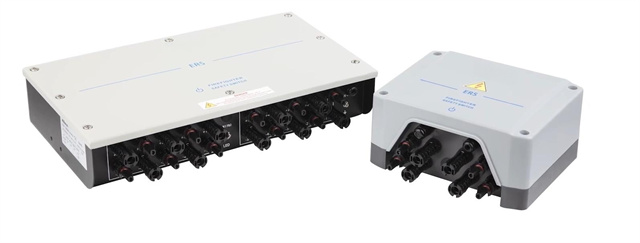Author:BLD Solar Energy SystemFROM:Solar System Converter Manufacturer TIME:2023-08-29
The rapid shutdown device is a crucial component in the solar photovoltaic (PV) industry that ensures the safety of personnel and emergency responders. It plays a vital role in reducing the potential risk of electric shock or fire hazards during maintenance, operation, or emergency situations. This article will explore the technical features of the rapid shutdown device solar, highlighting its importance and functionality.

The primary purpose of the rapid shutdown device (RSD) is to quickly de-energize the PV array during emergency situations or when maintenance work needs to be performed. It provides a means to shut down the flow of electricity from the solar panels to the inverter. This feature is particularly important for firefighter safety, as it minimizes the risks associated with electrical shock and prevents potential flare-ups that may occur during firefighting operations.
Furthermore, the RSD helps to meet various electrical code requirements, such as the National Electrical Code (NEC) in the United States. NEC 2017 introduced specific rapid shutdown requirements that mandate the use of RSDs in PV systems. These requirements aim to protect both the safety of personnel and ensure the efficient operation of emergency response teams.

Rapid shutdown devices have evolved over time, incorporating advanced technologies to enhance their functionality. Several key technical features are worth highlighting:
a. Communication Protocols: Modern RSDs utilize communication protocols like Power Line Communications (PLC) or wireless technology to transmit control signals between the inverter and the RSD. This allows for quick and reliable shutdown of the PV system.
b. Voltage Monitoring: RSDs continuously monitor the voltage levels in the PV array. In case of a fault or emergency, such as a power outage or detection of abnormal voltage, the RSD automatically initiates the shutdown process to ensure the safety of personnel and minimize potential hazards.
c. Integrated Disconnect Switch: Many RSDs come with an integrated disconnect switch, which allows for manual disconnection of the solar panels from the inverter. This feature facilitates maintenance work by providing a convenient means of isolating the PV system and ensuring the safety of technicians.

When installing a rapid shutdown device, certain considerations should be taken into account:
a. Compatibility: It is essential to ensure that the RSD is compatible with the specific PV system and inverter being used. Manufacturers provide compatibility lists and guidelines that should be followed during the installation process.
b. Wiring and Connection: Proper wiring and connections are crucial for the efficient operation of the RSD. Following manufacturer instructions and employing certified electricians can help guarantee a safe and effective installation.
c. Maintenance and Testing: Regular maintenance and testing of the RSD are necessary to ensure its continued functionality. Periodic checks, inspections, and adherence to manufacturer recommendations are essential to uphold the safety standards provided by the device.
In conclusion, the rapid shutdown device solar is a vital component in the PV industry, ensuring the safety of personnel and emergency responders. Its technical features, such as communication protocols, voltage monitoring, and integrated disconnect switches, contribute to efficient and effective shutdown capabilities. Successful installation requires considering compatibility, proper wiring, and regular maintenance and testing. By implementing these devices in solar PV systems, we can enhance safety and promote the widespread adoption of renewable energy.
